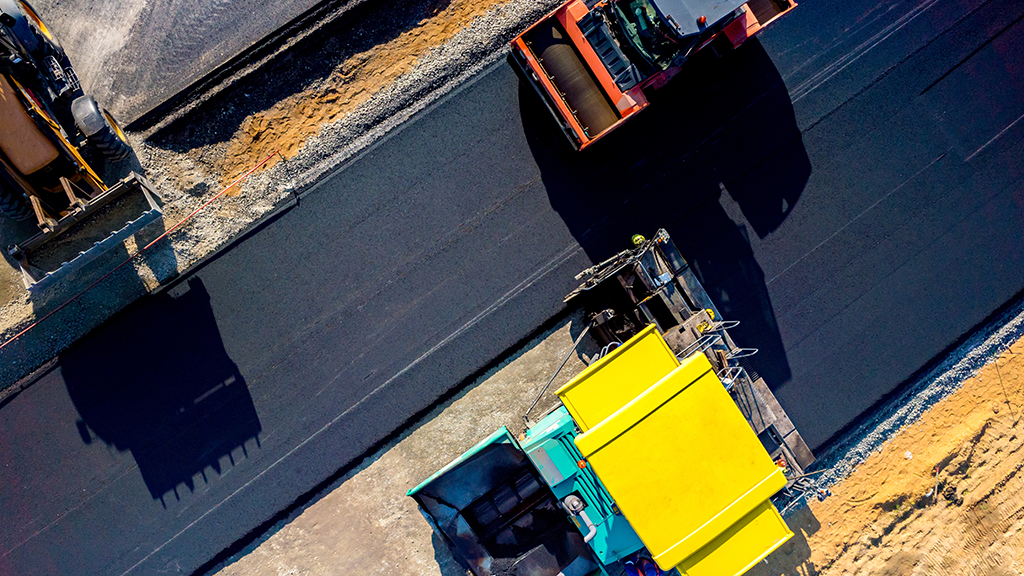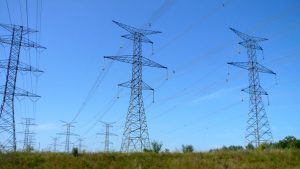The growing urgency to address climate change has led to a global push toward achieving net-zero carbon emissions by 2050, and the asphalt industry is no exception, attendees at the Ontario Asphalt Pavement Council’s recent fall seminar in Mississauga, Ont. were told.
That message was delivered by the keynote speaker Jean-Paul Fort, the pavement engineering and innovation director for the National Asphalt Pavement Association (NAPA).
In response to U.S. government legislation, such as the Inflation Reduction Act, the Greenbelt Maryland-based association launched the Road Forward Initiative in 2022 to guide the American asphalt industry towards net-zero production.
Fort’s opening remarks might have been considered somewhat pessimistic by some in the audience.
Citing a list of natural disasters such as the California wildfires of a few years ago, he suggested the ambitious goal adopted at the UN Climate Change Conference (COP21) in Paris in 2015 to limit global warming to 1.5 C by the end of this century, “unfortunately isn’t going to happen.”
But the overall thrust of his wide-ranging presentation was the need by the asphalt industry to take action.
There are many procedures and practices the industry can and should take to tackle climate change that will also improve its financial bottom line, said Fort, drawing many of his comments from the Road Forward study.
“We can make our companies profitable, not just save the planet.”
In his presentation, titled Decarbonizing the Asphalt Industry: Paving the Way to a Sustainable Future, Fort emphasized a handful of key strategies for reducing emissions in the asphalt mix production process while at the same time saving money.
They include an increased use and storage of Reclaimed Asphalt Pavement (RAP), the use of warm mix asphalt and improving plant operational efficiencies by embracing new technologies and transitioning to renewable electricity as a source of power.
Other key approaches include partnering with owners to enhance pavement longevity and efficiency, developing a net-zero materials supply chain and embracing Environmental Product Declarations (EPDs).
Widely used in the United States and now being implemented by some asphalt plants in Canada, EPDs for asphalt mixtures document the various “ingredients” that have gone into the mix design such as aggregate size, the mix design method, the performance grade of the binder and the temperatures used to produce it.
NAPA is the developer of the EPD tool that quantifies the environmental impact of an asphalt mix.
Under a number of subject headings, Fort delivered some in-depth recommendations on how those strategy objectives can be achieved while maintaining pavement performance and staying competitive in what is a low-bid system.
“We should prioritize the low-hanging fruits that are profitable on their own and provide immediate payback on their own.”
The number one priority in realizing that payback is optimizing asphalt plant operations, especially through moisture control by measures such as covering material stockpiles and placing them on paved pads.
Reducing moisture control saves energy, lowers CO₂ emissions and improves quality by allowing for more heat for drying aggregates and activating the RAP binder.
Approximately 50 per cent of plant energy consumption to produce asphalt mixtures is used for drying aggregates, he pointed out.
Besides moisture control, there are other methods plant operators can employ to lower both greenhouse emissions and their own costs. They can improve or add insulation, monitor air leaks and lower the gas exhaust temperatures in their stacks.
Plant efficiency operations are self-financing through operational savings, said Fort, who referred to a Michigan asphalt plant which installed a material stockpile pad.
“It paid for itself in a year.”
A large segment of Fort’s talk was devoted to the emission-lowering benefits of using RAP.
Using RAP reduces the need for virgin aggregates and binder (also know is asphalt cement) and, in the process, avoids the energy consumption and emissions associated with their extraction.
Then there is the cost of trucking, milling and processing of those materials, he said.
In the United States, Nebraska leads the nation in RAP usage. Over the past six years, the overall RAP content in the state’s department of transportation’s asphalt mixtures has been 39 per cent, said Fort.
Other emission lowering practices include using warm asphalt mix (as opposed to hot mix). Warm mix technologies use additives or foaming techniques to lower production temperatures. With this technology, particulate matter and volatile organic compounds emissions are lower and that, in turn, lowers worker exposure.
Among the list of other recommendations the audience was asked to consider was balanced mix design, which is the practice of using performance tests to balance resistance to pavement rutting and cracking.
In summing up his talk, Fort said the path towards net-zero emissions requires close co-operation between all the various parties involved in road construction.






Recent Comments